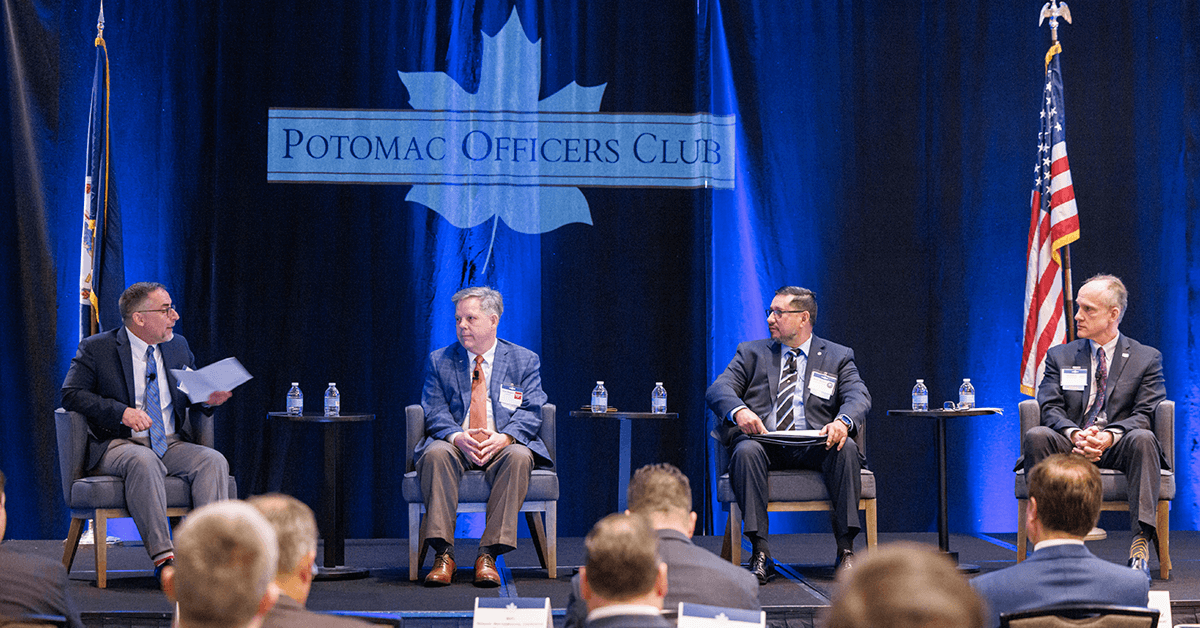The benefits of 5G are far reaching, but using spectrum outside the continental United States, or OCONUS, presents a unique set of challenges for military forces.
One of these challenges is moving away from what Arthur De Leon, director of strategic spectrum policy for the Department of the Navy’s Office of the Chief Information Officer, calls a “two dimensional” perspective and beginning to think about 5G as a “three dimensional domain.”
“As we start to look at where our technology is evolving to, the interfaces between our terrestrial, our aeronautical and our space type systems are there, we just haven’t developed those correct interfaces to allow us to do all that,” he said during a panel discussion at the Potomac Officers Club’s 2024 5G Forum last week.
Allowing this technology to evolve, he continued, will set a standard for how “we essentially look at spectrum.”
David Simpson, a retired Navy rear admiral who now serves as a professor at Virginia Tech’s College of Business Leadership and Cybersecurity Programs, pointed out a “say-do gap” in current military attitudes toward 5G, which “very quickly gravitate towards our high end platforms.”
He said the conflict in Ukraine has exemplified the need to operate effectively in multiple domains at the same time, illuminating flexibility as a top priority.

“Having our spectrum flexibility, having the greatest amount of agility allows us to bring systems in, bring them out, withstand damage and operate in an active electronic attack environment, so that’s what we need to get to,” he said.
“Being agile in the spectrum allows us to then be agile against an adversary that knows that today, we have multiple vertical stovepipe Achilles heels in the spectrum,” he elaborated.
Similarly, for forces at the edge, latency can be more important than following traditional security processes that may require a long tether between a device and a specific data center, according to Paul Remick, a senior account manager at Amazon Web Services.
Quick data sharing using cloud capabilities installed on ships or vehicles, he said, has already proven to be successful.
“It can be done internationally, it can be done at sea and in the air, and I would argue not too long in the future, we’ll probably even do this in space as well,” he said.
Now, forces must “get smart at the edge” to leverage these capabilities on limited spectrum.
De Leon noted that getting advanced 5G projects approved depends on not just capability, but presenting results to senior leadership because spectrum itself is very technical.
“The key piece is how I get the data, the bandwidth requirements I need in order to achieve our future growth in autonomous vehicles, our future growth in unmanned systems from delivering capability or future components of logistics,” he said.
“It’s all about passing that data. And when I talk about sharing information, the key piece that always comes up is if that information is actionable. Am I getting it to that Sailor, Marine on the ground that can decide based on that data in today’s environment?” he added.
Right now, said De Leon, it is difficult, but “with today’s technology, we could get there.”

Join us at the Potomac Officers Club’s next event – the 2024 Cyber Summit on June 6 – to gain even more insights from public and private sector experts. During this engagement, leaders will share their thoughts on the evolving cyber domain and its impact on federal operations. To learn more and register to attend the summit, click here.
















